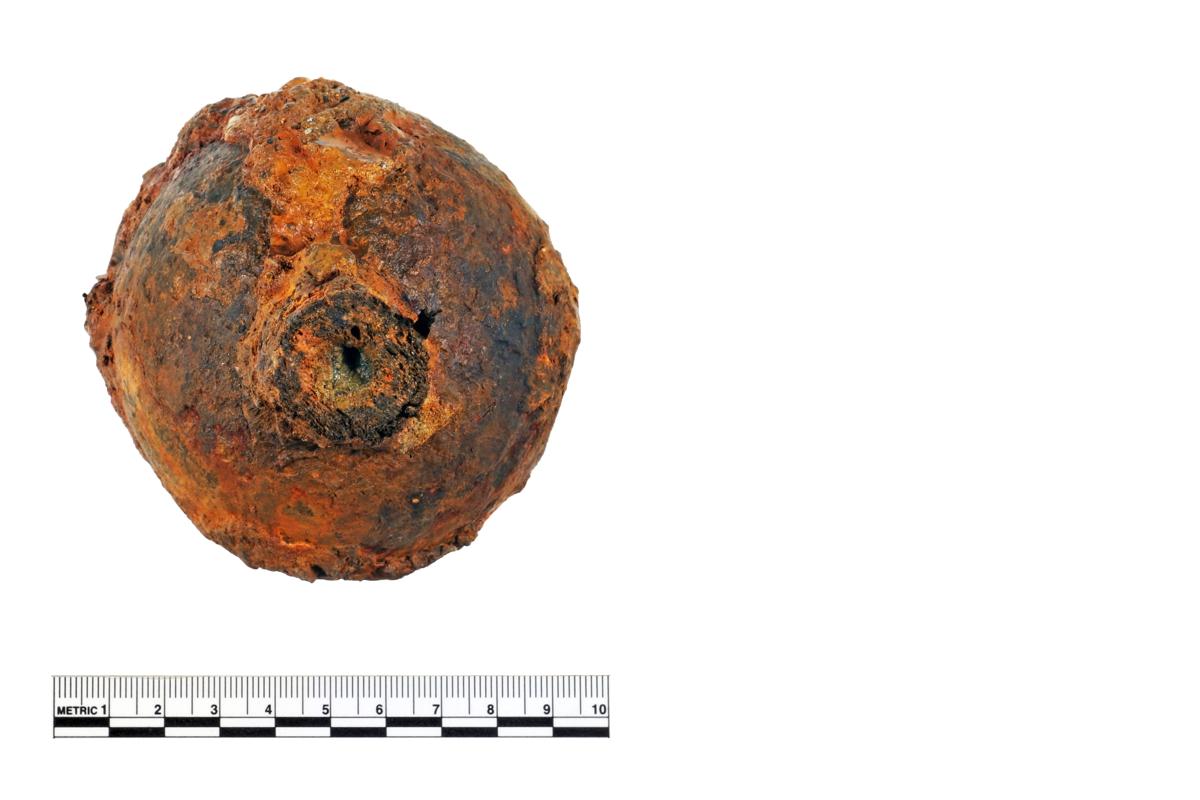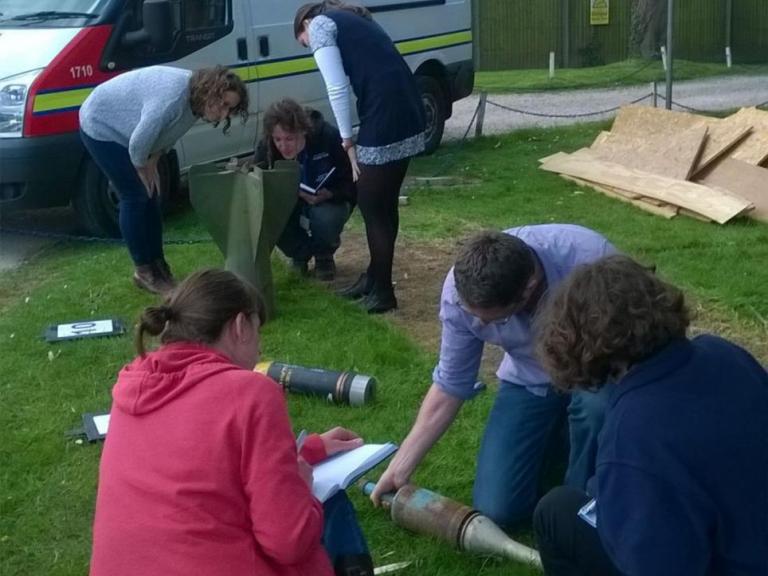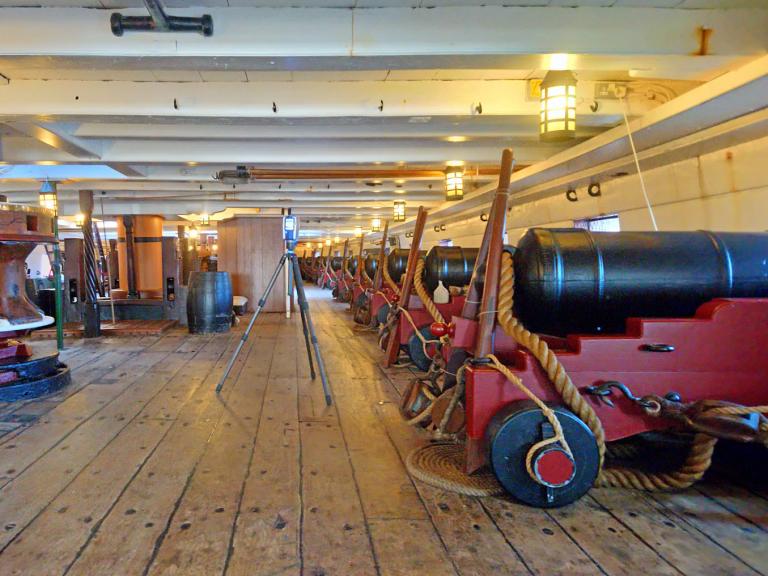During the Portsmouth dredge project, the harbour and its approach was deepened to allow the new aircraft carrier HMS Queen Elizabeth to access the port. During the project, numerous archaeological finds were recovered, including several cannonballs. During the conservation of the finds, it was discovered that one of the ‘cannonballs’ was not a cannonball at all. In fact, it turned out to be a hand grenade of Napoleonic date.


The grenade is spherical and made of cast iron with its fuse still intact. The first grenades were small iron spheres filled with gunpowder fused with a length of slow-match. These types of grenades weighed around 1.5 kg and were equivalent in size to a four-pound cannonball (Crowdy 2015). These types of hand grenades were used during land combat and on Naval vessels. One of the more common munitions aboard warships during the late 18th century and early 19th century was the hand grenade, used for close quarter action. Examples were recovered from HMS Pomone that also had their original fuse in place (Henry 2004). Hand grenades of this kind were used during the Napoleonic era (1799−1815) and were used by both the French and British.
Grenadiers were a specific type of soldier during the late 18th century to the early 19th century tasked with throwing grenades during combat. They had to be at the forefront of the fight to light the fuse and throw at the appropriate moment to minimize the opportunity for the enemy to throw the grenade back. They were selected for being strong, tall and skilled enough to throw them far enough away so as not to harm themselves or their comrades. Such skills led to grenadiers being regarded as an elite fighting force and they were easily identified by their head-gear from ordinary musketeers. The uniform included a belt tube that held the match for lighting the fuse, a feature that was retained in later grenadier uniforms.
Peter Goodwin, a Historical Maritime Consultant and previous curator of HMS Victory confirmed that based on its size, this is certainly a hand grenade dating to the Napoleonic era. The fuse at the top of the grenade body is believed to be made of wood, and based on its age is most likely made of beech wood.
References
Crowdy, T. 2015 Napoleon's Infantry Handbook. Barnsley, Pen and Sword
Henry, C. 2004 Napoleonic Naval Armaments 1792–1815. Oxford, Osprey Publishing
Niagara 1812 Legacy Council, 2012. The Bombs Burst in the Air. Niagara, Niagara 1812 Legacy Council



